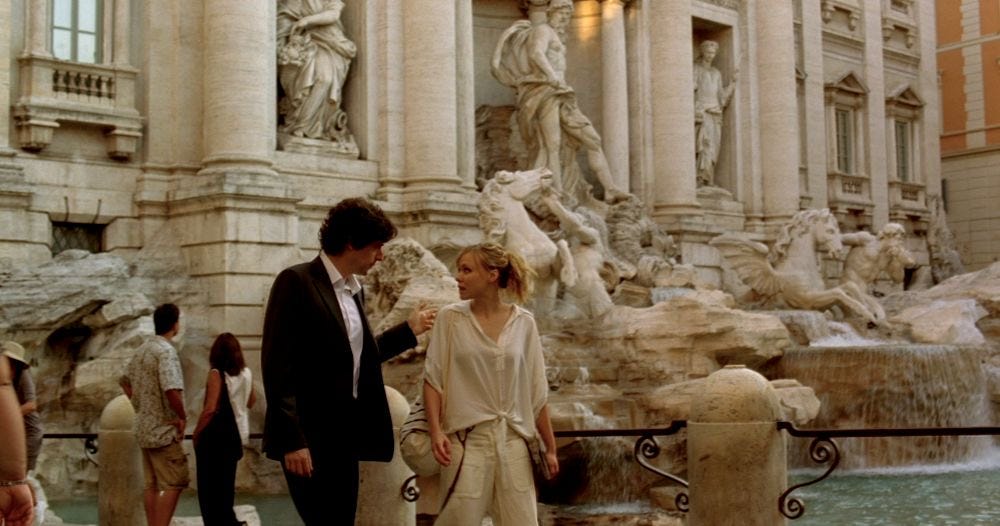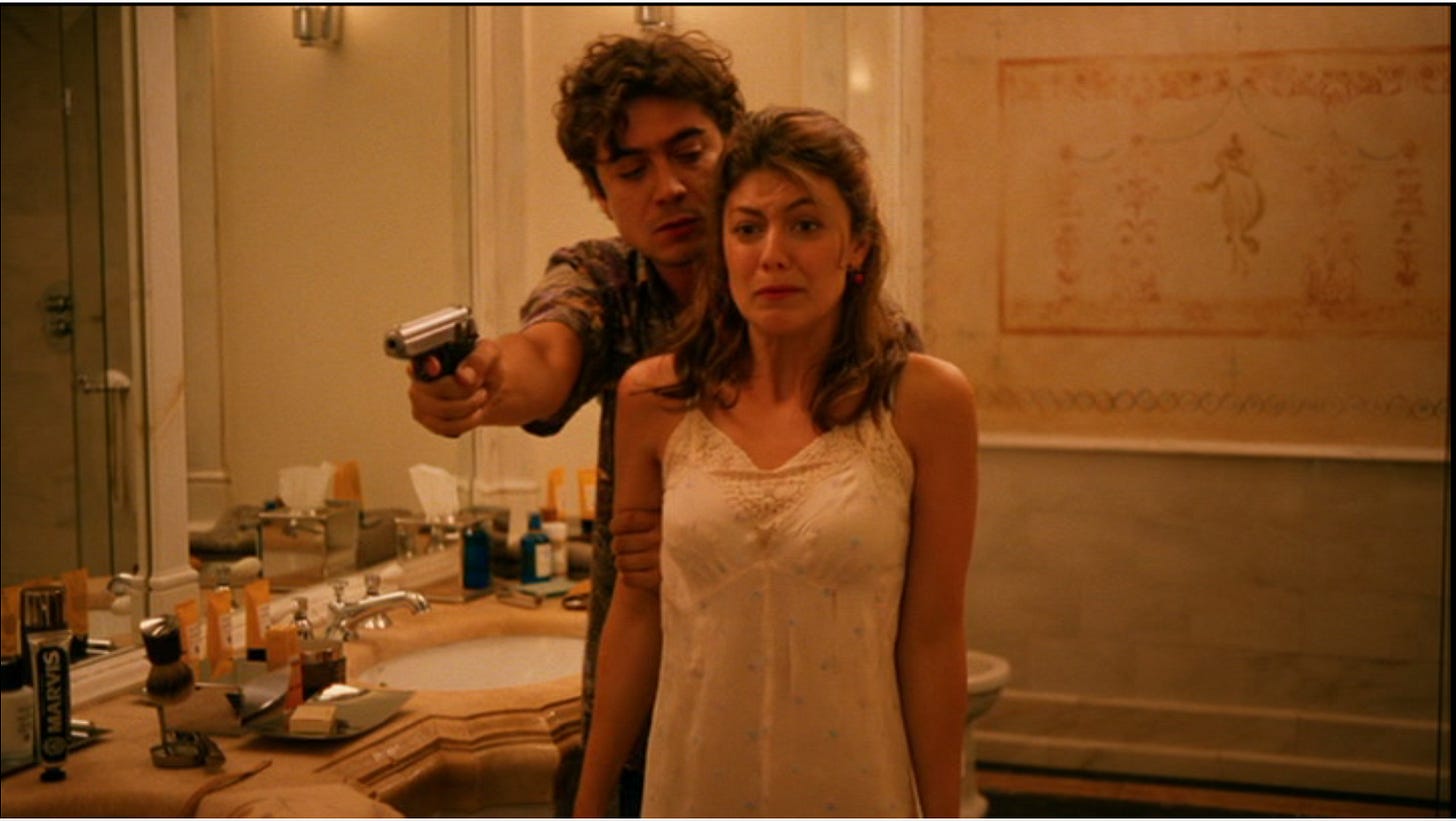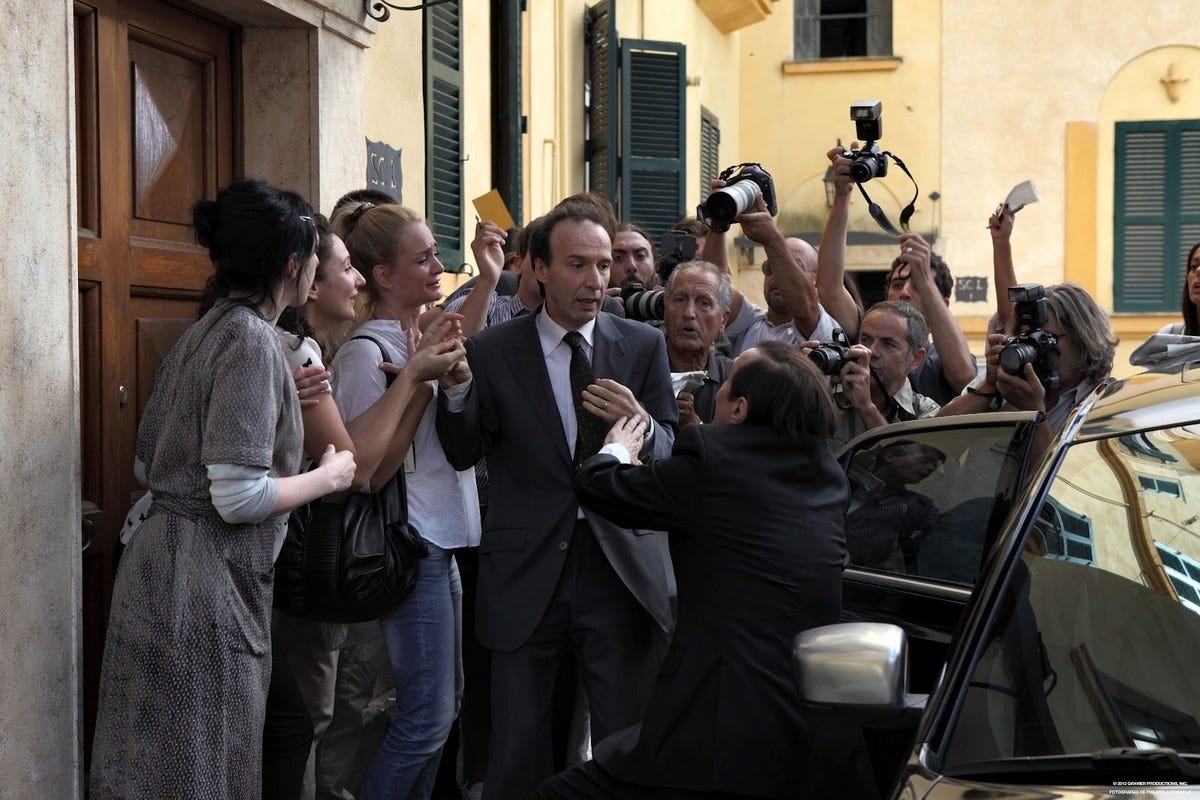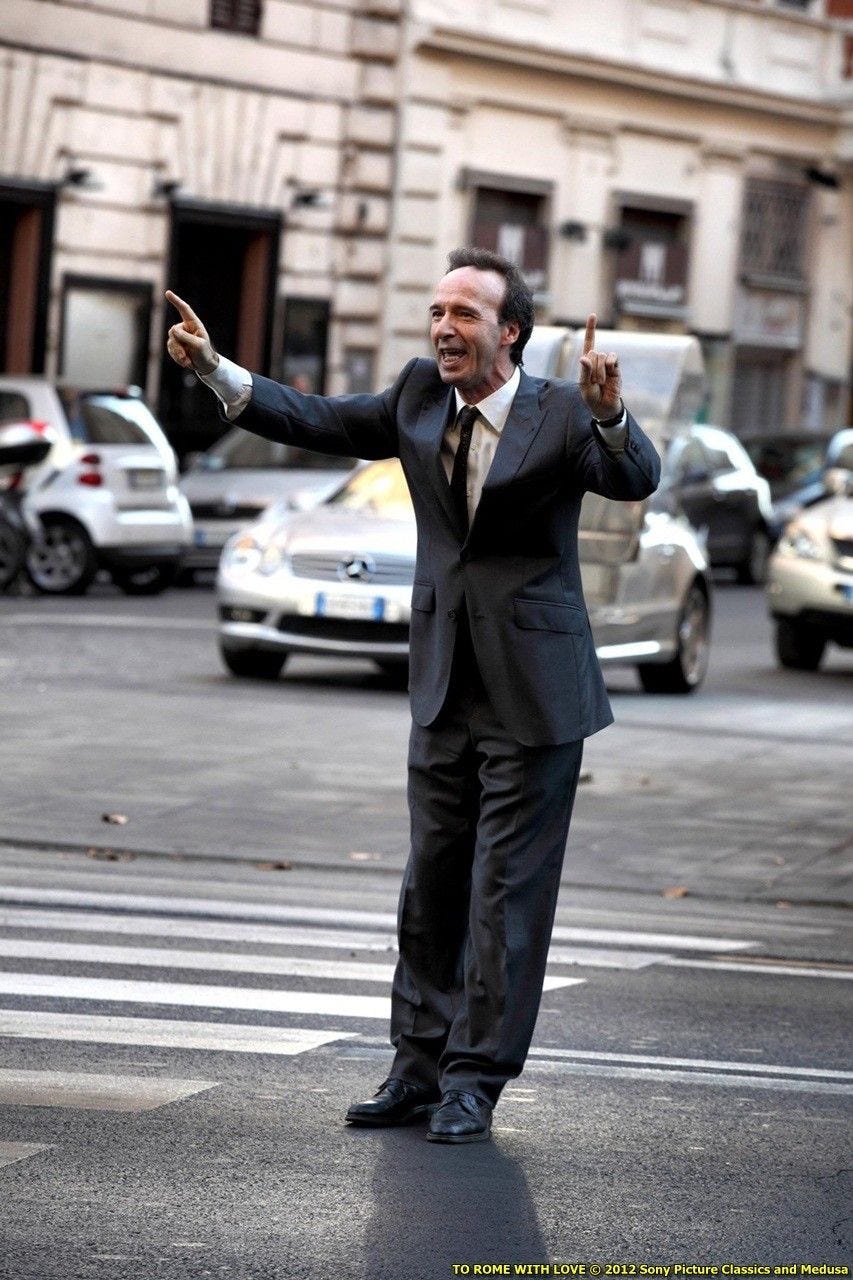Written and directed by Woody Allen, To Rome With Love is a romantic comedy that weaves together four tales set in the Eternal City. Each story explores themes of love, fame, regret, and the beauty of life’s unpredictability.
Featuring an ensemble cast that includes Alec Baldwin, Jesse Eisenberg, Ellen Page, Penélope Cruz, and Roberto Benigni, the film is both a celebration of Rome and a reflection on human connection.
Using the FILMS framework—Foundations, Imagery, Layered Storytelling, Motion, and Subtext—let’s break down this whimsical yet poignant cinematic experience.
Foundations (9/10)
Focus: Plot structure, character development, genre integration, and setting.
To Rome With Love excels in its ability to present four interconnected stories without overwhelming the viewer. Each storyline is compelling and coherent, with motivations that feel believable and relatable. The film captures the essence of Rome, where love and possibility are ever-present.
Strengths:
A cohesive narrative that intertwines four unique love stories.
Authentic and relatable characters, from the retired opera director to the starstruck tourist.
Smart, witty dialogue that feels natural yet aspirational.
Rome itself serves as a character, providing a stunning and immersive setting.
Score: 9/10 – Exceptional storytelling with a perfect balance of humor, romance, and reflection.
Sony Pictures Classics and Medusa 2012
Imagery (9.5/10)
Focus: Cinematography, color palette, framing, and visual style.
The film’s cinematography captures the beauty and charm of Rome, from bustling piazzas to quiet, intimate corners. The use of light and color reflects the emotional tone of each scene, enhancing the storytelling.
Strengths:
Rich, warm color palettes that evoke romance and nostalgia.
Memorable shots, such as the amphitheater scene where characters appear small against the grandeur of Rome, emphasizing the interplay between individual stories and the vastness of life.
Effective use of light and shadow to create mood, from bright, golden daytime scenes to the soft, intimate glow of evening.
A visual motif of water and rain that underscores emotional turning points.
Score: 9.5/10 – Masterful use of visuals that tell a story of their own.
Sony Pictures Classics and Medusa 2012
Layered Storytelling (10/10)
Focus: Narrative structure, pacing, character arcs, and plot complexity.
Woody Allen’s screenplay offers a rich tapestry of interconnected narratives, each exploring different aspects of love and life. The film seamlessly blends humor, drama, and introspection, rewarding viewers who pay close attention.
Strengths:
A mix of linear and non-linear storytelling that reflects the complexity of life and memory.
Meaningful character arcs, such as a man reconciling with fame and a young couple exploring temptation.
Subplots that enrich the main narrative without feeling extraneous.
A love letter to Rome itself, capturing the city’s magic and chaos.
Score: 10/10 – A masterclass in storytelling that invites reflection and repeat viewings.
Sony Pictures Classics and Medusa 2012
Motion (9/10)
Focus: Direction, editing, sound design, rhythm, and energy.
The film’s rhythm flows naturally as it transitions between its four stories. Allen’s direction and deliberate pacing ensure that the audience remains engaged without feeling rushed or bogged down.
Strengths:
Seamless transitions between stories, often using clever visual or dialogue cues.
Balanced pacing that keeps the film engaging throughout.
Camera angles that emphasize characters’ emotional states, such as the subtle upward tilt to capture Milly’s awe during a key moment.
A lively, varied score that reflects the distinct tone of each storyline.
Score: 9/10 – A finely tuned rhythm and energy that match the film’s themes and style.
Sony Pictures Classics and Medusa 2012
Subtext (10/10)
Focus: Themes, symbolism, and social or cultural commentary.
Beneath its lighthearted surface, To Rome With Love explores profound themes, from the fleeting nature of fame to the tension between dreams and reality. Its commentary on modern life feels both timeless and timely.
Strengths:
Themes of love, regret, and the mundane beauty of life resonate deeply.
A satirical look at fame through the story of Leopoldo, an average man thrust into the spotlight.
A subtle critique of modern culture’s obsession with celebrity and validation.
Layered metaphors that encourage viewers to reflect on their own lives.
Score: 10/10 – Rich subtext that adds depth and invites introspection.
Sony Pictures Classics and Medusa 2012
Final FILMS Score
Foundations: 9/10
Imagery: 9.5/10
Layered Storytelling: 10/10
Motion: 9/10
Subtext: 10/10
Total FILMS Score: 47.5/50
Average FILMS Score: 9.5/10
Sony Pictures Classics and Medusa 2012
Final Thoughts
To Rome With Love is a charming, thoughtful, and beautifully crafted film that captures the romance and chaos of life in the Eternal City. With its rich storytelling, stunning visuals, and poignant themes, the film stands as a celebration of love in all its forms.
What works:
Captivating stories with relatable characters and meaningful arcs.
Stunning cinematography and masterful direction.
Thought-provoking themes that resonate across cultures and generations.
What could be improved:
Minor moments of ambiguity in the timeline may confuse some viewers.
For fans of romantic comedies with depth, To Rome With Love is a must-watch—a love letter to Rome, cinema, and the unpredictability of life itself.
Sony Pictures Classics and Medusa 2012
Shanghai Noon (2000)
Director Tom Dey’s Shanghai Noon is a genre-bending action-comedy starring Jackie Chan as Chon Wang and Owen Wilson as Roy O’Bannon. Released in 2000, this film offers a playful blend of martial arts, Western tropes, and buddy-comedy antics. Using my FILMS framework I introduced on Sunday—Foundations, Imagery, Layered Storytelling, Motion, and Subtext—l…




















Share this post